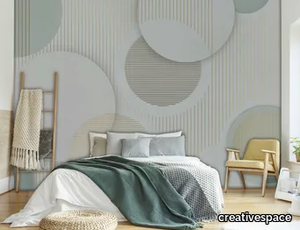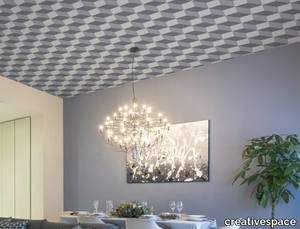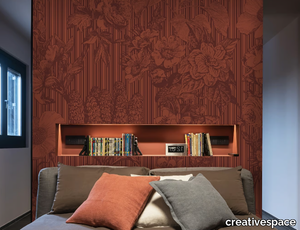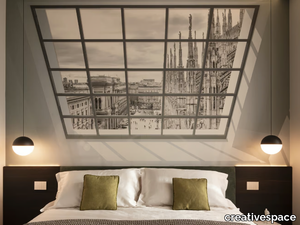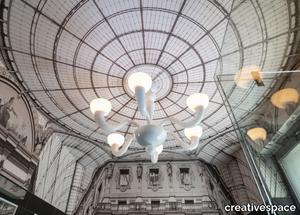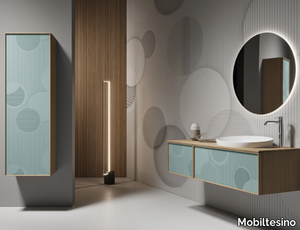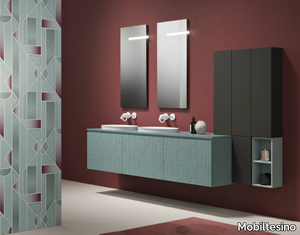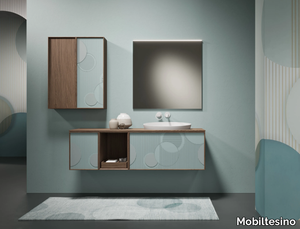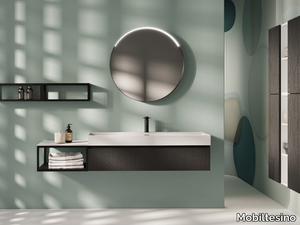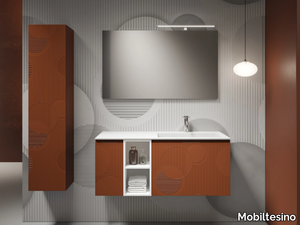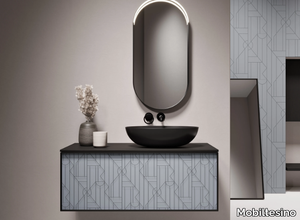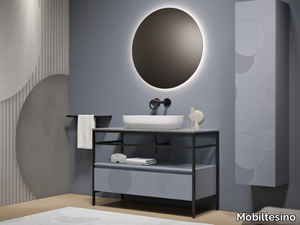Fontana
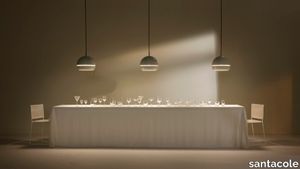
santacole > Ceiling lamp
Designed by André Ricard in 1970, Fontana defends its futuristic appearance through the generous size of its more than half-sphere and the unmistakable slit that illuminates the periphery.
Duo

santacole > Table lamp
The Duo lamp was conceived by André Ricard for “executive desks”, not only that good focal light was required when going through extensive paperwork, but also the fact that, in the face of visitors, the view of those who sat in the confidants’ chairs should not be obstructed by a large or ostentatious lampshade. Duo fulfils both purposes seamlessly. It illuminates with proximity, and does not interrupt the visual horizon. The luminous flux is adjustable by the independent rotation of its glass shades, which can be opaque to focus the light on the work surface, or translucent to provide a more general illumination too.
Steel Lab Light Table Anatomy Design, 2010

karakterCopenhagen > Table lamp
Inspired by her parents’ pharmaceutical work and their old lab equipment, Andrea Kleinloog from Anatomy Design designed the Lab Light mixing steel, brass and porcelain. This brought on a desire to make a lamp with a younger feel. Base, lampshade, and rotating arm—all in painted aluminium.
Steel Lab Light Floor Anatomy Design, 2010

karakterCopenhagen > Table lamp
Inspired by her parents’ pharmaceutical work and their old lab equipment, Andrea Kleinloog from Anatomy Design designed the Lab Light mixing steel, brass and porcelain. This brought on a desire to make a lamp with a younger feel. Base, lampshade, and rotating arm—all in painted aluminium.
Volver breath of newlight.
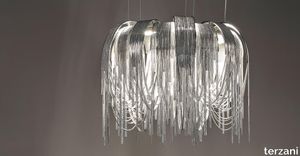
terzani > Ceiling lamp
At Terzani, we are fortunate to work with some of the brightest young stars in italian design. For Volver, designer Diego Bassetti and architect Andrea Panzeri of Studio 14, protegés of Bruno Rainaldi, applied their multidisciplinary approach to create Terzani’s first led suspension light. This geometric design combines thin chains with the latest in led technology to create a light that is both elegant and modern. A breath of new light, Volver melds technology and art to achieve a new level of luxury. Available in a circular variation. Design Studio 14.
D.151.4 Armchair
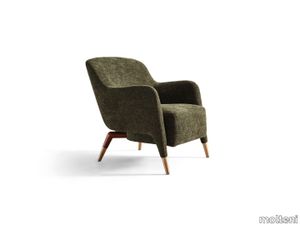
molteni > Armchair
Always passionate about nautical furnishings Gio Ponti gained direct experience in four ocean liners and two cruise ships upgraded or built from scratch after the war between 1949 and 1951 the Conte Grande Africa Oceania Conte Biancamano Andrea Doria and Giulio Cesare. Ponti designed this easy chair with slight variants for these ships.
Volver breath of newlight.
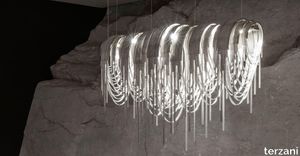
terzani > Ceiling lamp
At Terzani, we are fortunate to work with some of the brightest young stars in italian design. For Volver, designer Diego Bassetti and architect Andrea Panzeri of Studio 14, protegés of Bruno Rainaldi, applied their multidisciplinary approach to create Terzani’s first led suspension light. This geometric design combines thin chains with the latest in led technology to create a light that is both elegant and modern. A breath of new light, Volver melds technology and art to achieve a new level of luxury. Available in a circular variation. Design Studio 14.
D.150.5 - Outdoor Collection

molteni > Outdoor furniture
In collaboration with the Gio Ponti Archives and the heirs of the renowned Milanese architect Molteni&C is reconstructing one of the rare pieces of furniture Gio Ponti designed for outdoor use the D.150.5 chaise longue projects for the cruise ship Andrea Doria in 1952.
Coretech Satin Dark
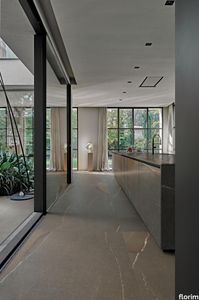
florim > Wall tile-stone-brick
<p>Florim’s Coretech collection takes Piasentina stone quarried in the foothills of the Julian Alps and enhances its performance to cater to the needs of contemporary architecture.</p> <p>Piasentina stone is ideally suited to the creation of relief textures and finishes using traditional methods and age-old techniques.<br>Different types of processing give different colours and feels to this natural stone, thus making it possible to put together numerous combinations using the same material. </p> <p>Piasentina stone’s name means “pleasing stone” in Friulian. It has been known since ancient Roman times and it is now highly sought after in architecture in Italy and internationally due to the shades of colour and versatility it can offer indoors and outdoors, on both urban floors and walls.</p> <p><br>It stands out not only due to its distinctive feel but also thanks to its refined <strong>grey tones </strong>with slender white veins and little brownish tinges.</p> <p><br>It is a stone that can conjure up all sorts of emotional responses, making it a popular choice among interior designers and architects across the globe. It has played a central role in numerous constructions over the centuries, including churches, palaces, villas, rural buildings and flooring. It was used by figures such as the Renaissance master Andrea Palladio and Raimondo D’Aronco in the Art Nouveau period and it continues to be employed in 21st century architecture and design.</p>
Coretech Flame Light

florim > Wall tile-stone-brick
<p>Florim’s Coretech collection takes Piasentina stone quarried in the foothills of the Julian Alps and enhances its performance to cater to the needs of contemporary architecture.</p> <p>Piasentina stone is ideally suited to the creation of relief textures and finishes using traditional methods and age-old techniques.<br>Different types of processing give different colours and feels to this natural stone, thus making it possible to put together numerous combinations using the same material. </p> <p>Piasentina stone’s name means “pleasing stone” in Friulian. It has been known since ancient Roman times and it is now highly sought after in architecture in Italy and internationally due to the shades of colour and versatility it can offer indoors and outdoors, on both urban floors and walls.</p> <p><br>It stands out not only due to its distinctive feel but also thanks to its refined <strong>grey tones </strong>with slender white veins and little brownish tinges.</p> <p><br>It is a stone that can conjure up all sorts of emotional responses, making it a popular choice among interior designers and architects across the globe. It has played a central role in numerous constructions over the centuries, including churches, palaces, villas, rural buildings and flooring. It was used by figures such as the Renaissance master Andrea Palladio and Raimondo D’Aronco in the Art Nouveau period and it continues to be employed in 21st century architecture and design.</p>
Coretech Flame Dark

florim > Wall tile-stone-brick
<p>Florim’s Coretech collection takes Piasentina stone quarried in the foothills of the Julian Alps and enhances its performance to cater to the needs of contemporary architecture.</p> <p>Piasentina stone is ideally suited to the creation of relief textures and finishes using traditional methods and age-old techniques.<br>Different types of processing give different colours and feels to this natural stone, thus making it possible to put together numerous combinations using the same material. </p> <p>Piasentina stone’s name means “pleasing stone” in Friulian. It has been known since ancient Roman times and it is now highly sought after in architecture in Italy and internationally due to the shades of colour and versatility it can offer indoors and outdoors, on both urban floors and walls.</p> <p><br>It stands out not only due to its distinctive feel but also thanks to its refined <strong>grey tones </strong>with slender white veins and little brownish tinges.</p> <p><br>It is a stone that can conjure up all sorts of emotional responses, making it a popular choice among interior designers and architects across the globe. It has played a central role in numerous constructions over the centuries, including churches, palaces, villas, rural buildings and flooring. It was used by figures such as the Renaissance master Andrea Palladio and Raimondo D’Aronco in the Art Nouveau period and it continues to be employed in 21st century architecture and design.</p>
Coretech Brushed Light

florim > Wall tile-stone-brick
<p>Florim’s Coretech collection takes Piasentina stone quarried in the foothills of the Julian Alps and enhances its performance to cater to the needs of contemporary architecture.</p> <p>Piasentina stone is ideally suited to the creation of relief textures and finishes using traditional methods and age-old techniques.<br>Different types of processing give different colours and feels to this natural stone, thus making it possible to put together numerous combinations using the same material. </p> <p>Piasentina stone’s name means “pleasing stone” in Friulian. It has been known since ancient Roman times and it is now highly sought after in architecture in Italy and internationally due to the shades of colour and versatility it can offer indoors and outdoors, on both urban floors and walls.</p> <p><br>It stands out not only due to its distinctive feel but also thanks to its refined <strong>grey tones </strong>with slender white veins and little brownish tinges.</p> <p><br>It is a stone that can conjure up all sorts of emotional responses, making it a popular choice among interior designers and architects across the globe. It has played a central role in numerous constructions over the centuries, including churches, palaces, villas, rural buildings and flooring. It was used by figures such as the Renaissance master Andrea Palladio and Raimondo D’Aronco in the Art Nouveau period and it continues to be employed in 21st century architecture and design.</p>
